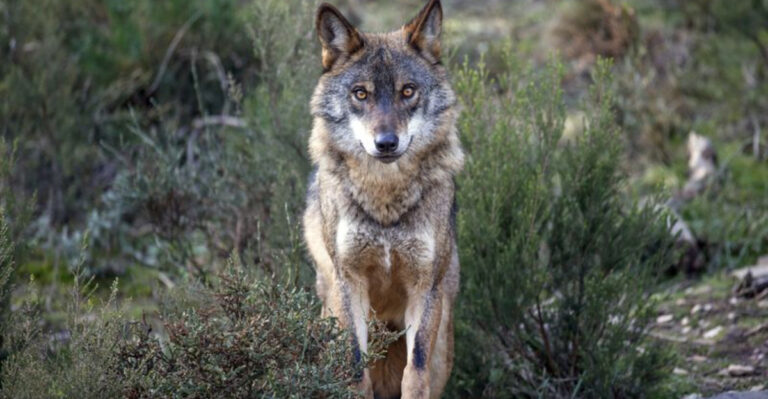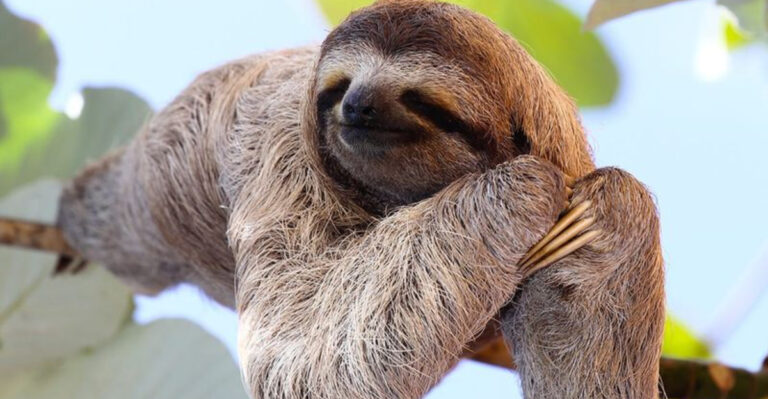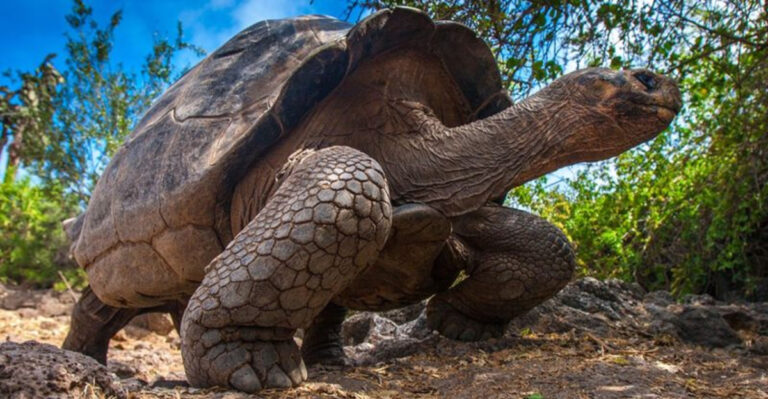16 Surprising Things That Happen When Bison Return To Their Historic U.S. Range

When bison roam the plains again, it’s more than just a powerful sight—it’s a ripple effect across the entire landscape.
These iconic animals once shaped North America’s ecosystems, and now, as they reclaim parts of their historic range, they’re doing it again. From revitalising grasslands to supporting other wildlife, here are fascinating changes that unfold when bison return to where they belong.
1. Nutrient Cycles Revitalize

Bison, often referred to as “ecosystem engineers,” play a crucial role in rejuvenating nutrient cycles. Their grazing habits promote plant diversity by preventing any one species from dominating.
As bison move, they distribute seeds and fertilize the soil with their waste, enhancing plant growth. This natural process contributes to a balanced ecosystem, fostering the growth of numerous plant species.
2. Bison Tracks Enhance Trails
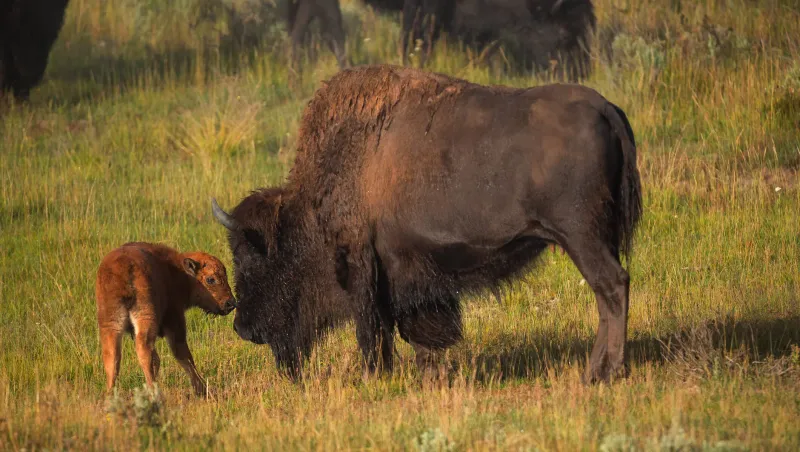
The paths bison tread become more than mere trails; they transform into vital conduits for other wildlife. As bison traverse the landscape, their tracks create well-defined paths that other animals, from deer to hikers, frequently utilize.
These trails assist in the migration of species, offering routes that connect fragmented habitats. They also facilitate human exploration, inviting people to follow in the footsteps of these ancient wanderers.
3. Prairie Landscapes Transform

Bison hooves break up hard soil, creating perfect spots for new plants to take root. Their selective grazing habits – nibbling some grasses while leaving others – creates a mosaic of vegetation heights across the prairie.
This patchwork landscape supports more diverse plant communities than cattle-grazed or ungrazed areas. The result? More wildflowers, healthier grasses, and landscapes that look more like they did centuries ago.
4. Bird Populations Bounce Back
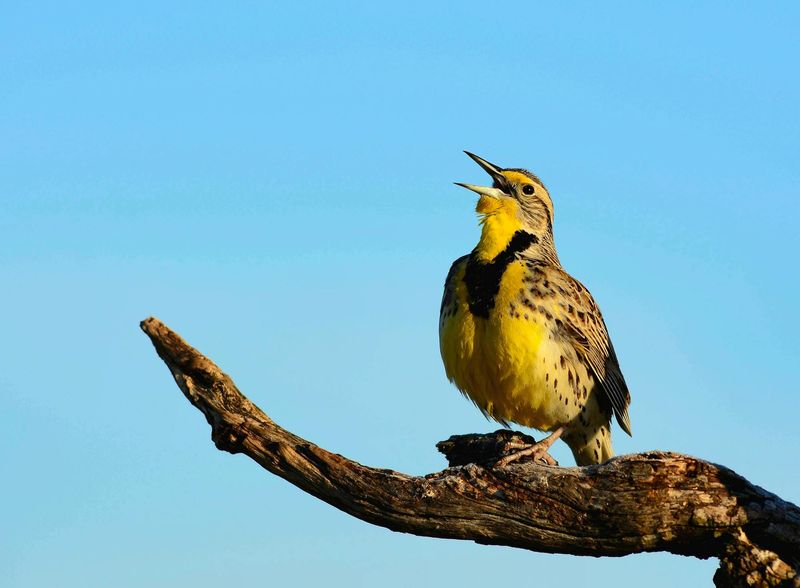
Grassland birds find paradise in bison territory. Species like meadowlarks and grasshopper sparrows thrive in the varied vegetation heights created by bison grazing patterns.
Some birds follow bison herds directly, feasting on insects kicked up by massive hooves. Ground-nesting species appreciate the uneven grass heights, finding perfect hiding spots for their nests. Bird-watchers often report greater diversity in areas where bison have returned.
5. Water Systems Get Cleaner
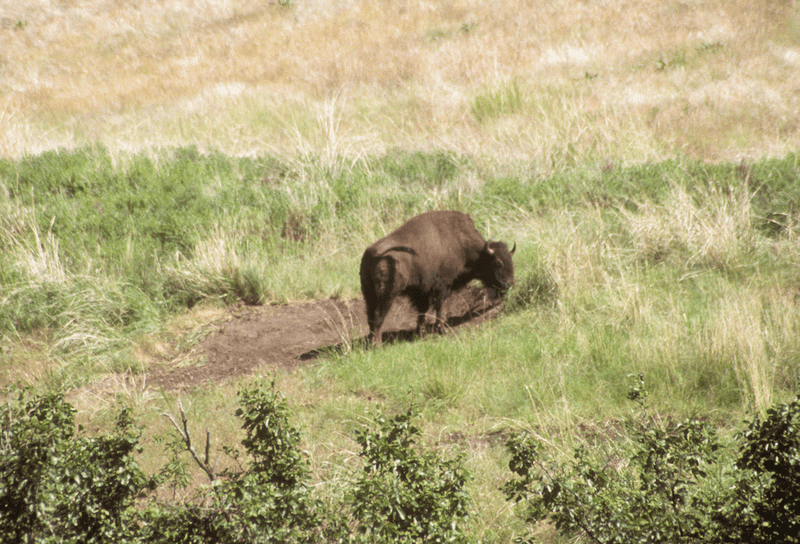
Bison wallows – those dusty depressions created when bison roll around – might look like simple dirt holes, but they’re ecological powerhouses. When it rains, these depressions collect water, creating temporary pools crucial for amphibians and insects.
Unlike cattle, bison rarely loiter in streams and wetlands, reducing bank erosion and water contamination. Their grazing patterns near waterways help maintain healthier riparian zones with stronger plant root systems that filter runoff.
6. Soil Health Improves Dramatically
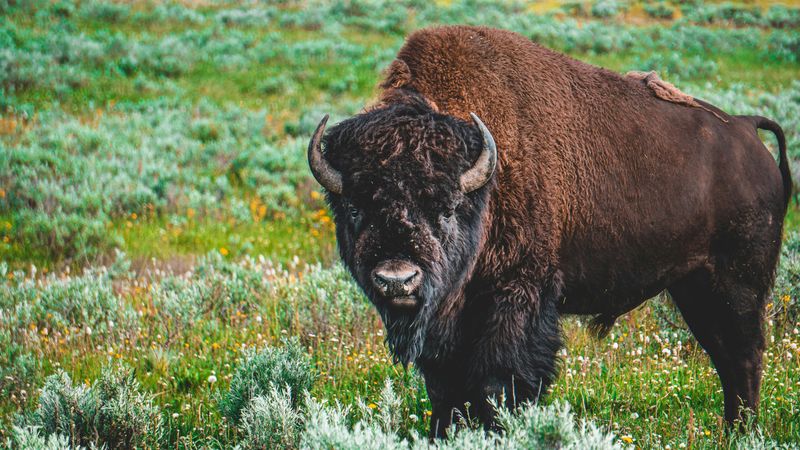
Bison fur traps seeds and transports them across the landscape, while their dung delivers perfectly packaged fertilizer. Their bodies host microorganisms that enrich soil when returned to the earth.
Their hooves break compacted ground, allowing water to penetrate deeper. Research shows bison-grazed soils contain more carbon and nitrogen than cattle-grazed areas. Healthier soil means stronger drought resistance and greater carbon sequestration – nature’s way of fighting climate change.
7. Native Plant Species Reappear
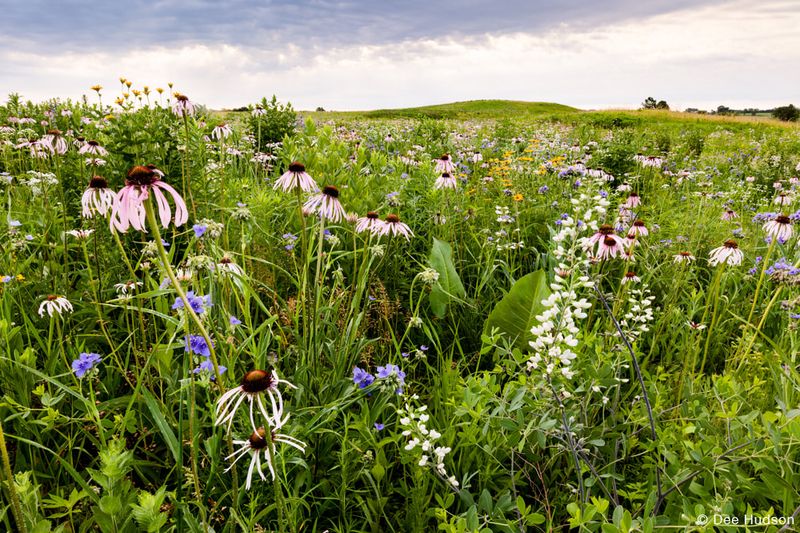
Forgotten flowers make dramatic comebacks when bison return. Plants that evolved alongside these massive grazers often respond positively to their presence, with some rare species suddenly appearing after decades of absence.
Bison digestive systems help disperse native seeds, sometimes carrying them miles before depositing them with a handy fertilizer package. Their selective grazing habits also reduce competition from aggressive species, giving delicate natives a fighting chance to reclaim territory.
8. Predator Networks Rebuild
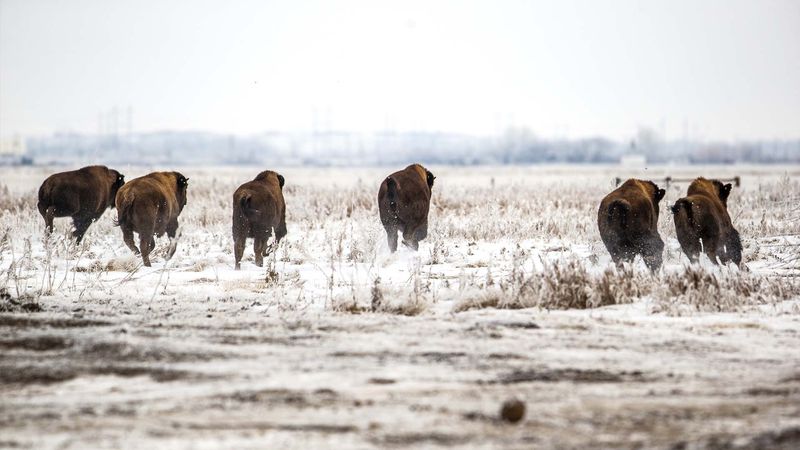
Wolves, bears and other predators once followed bison herds, creating natural checks and balances. Modern bison reintroductions create opportunities for these predator-prey relationships to partially reform.
Even without large predators, smaller carnivores benefit. Coyotes, foxes, and raptors feast on rodents exposed by bison grazing. Scavengers like eagles and ravens find meals from bison that don’t survive harsh winters, completing nature’s recycling system.
9. Insect Communities Diversify
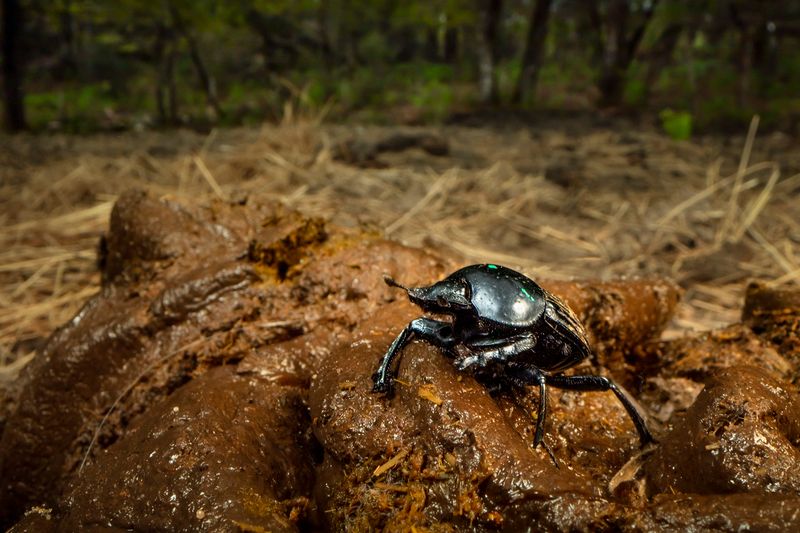
Dung beetles throw parties when bison return! These specialized insects evolved alongside bison, with some species specifically adapted to process bison waste, turning it into soil gold.
Pollinator populations surge as bison grazing creates more flowering plants. Grasshoppers and other insects thrive in the varied vegetation heights. Even bison fur provides habitat – certain mites and lice evolved to live exclusively on these shaggy beasts, returning alongside their hosts.
10. Tourism Boosts Local Economies
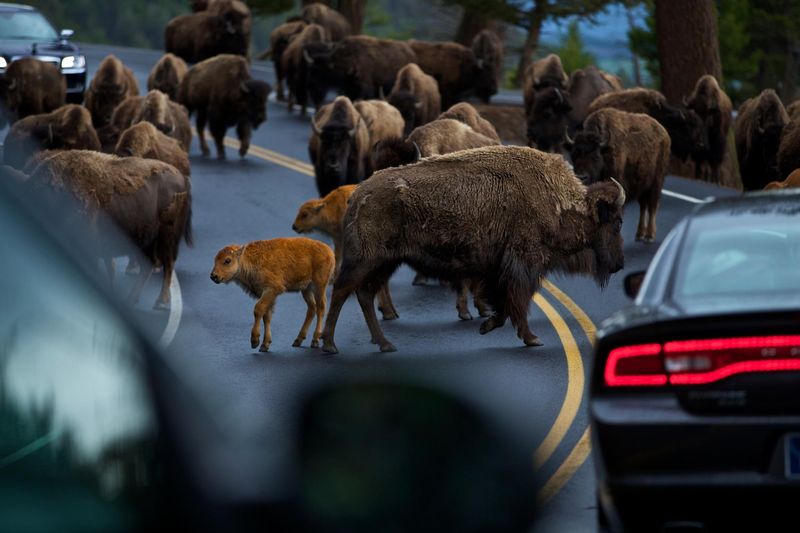
Communities near bison reintroduction sites often see significant tourism increases. Visitors travel hundreds of miles for a chance to photograph these iconic animals in their natural setting.
Local businesses develop bison-themed products, from artwork to specialty foods. Tour companies offer wildlife viewing experiences. A study in Yellowstone found bison viewing generated millions in tourism revenue annually. For struggling rural economies, these majestic animals become economic engines.
11. Indigenous Cultural Connections Strengthen
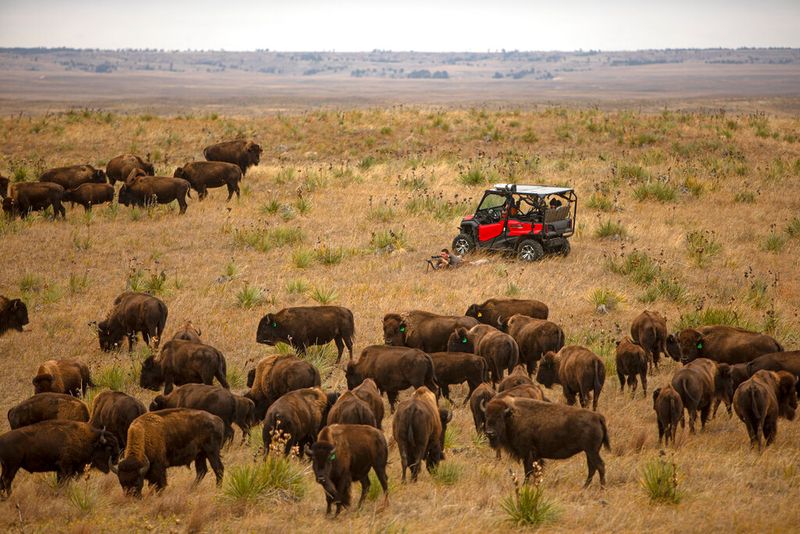
For many Native American tribes, bison represent more than wildlife – they’re cultural keystones. Bison restoration projects often involve tribal leadership, strengthening sovereignty and traditional knowledge systems.
Some tribes have established their own herds, reconnecting with ancestral practices. Ceremonial uses resume, educational programs flourish, and younger generations learn traditional relationships with these animals. These cultural revivals extend beyond tribes to educate broader communities about indigenous perspectives.
12. Fire Regimes Normalize

Wildfires behave differently when bison are present. By reducing fuel loads through grazing and creating natural firebreaks with their trails, bison help moderate fire intensity and spread.
Historically, fires and bison worked together to maintain healthy grasslands. Lightning-sparked blazes would clear old vegetation, bison would follow the fresh growth, and their grazing would prevent any single area from accumulating too much fuel for the next fire. This natural cycle reduces catastrophic wildfire risk.
13. Small Mammal Habitats Expand
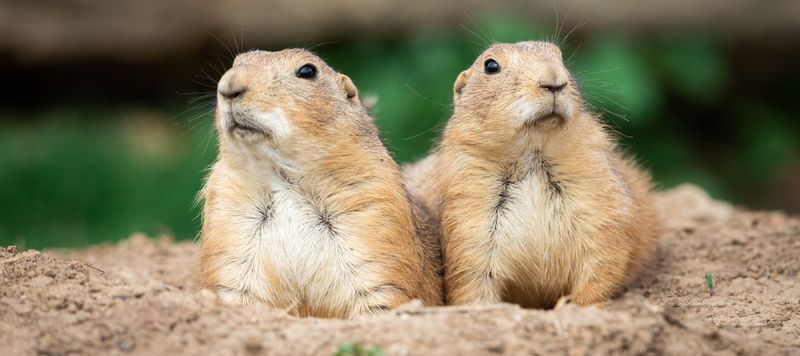
Prairie dogs, ground squirrels, and voles find ideal conditions in bison territory. The varied vegetation heights provide both food sources and cover from predators.
Abandoned bison wallows become homes for burrowing animals. Even bison fur, shed during seasonal molts, becomes nesting material for small mammals. These flourishing small mammal populations support entire food webs, from snakes and hawks to foxes and badgers.
14. Agricultural Practices Evolve
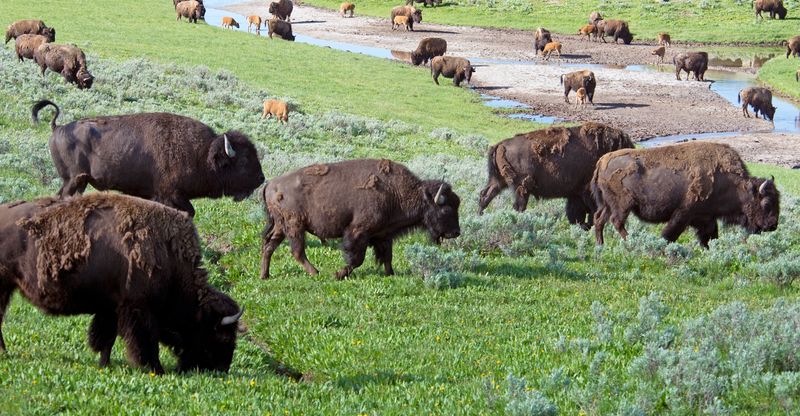
Ranchers near bison reintroduction sites often adopt new management techniques. Witnessing how bison interact with landscapes inspires some to implement rotational grazing systems that mimic natural patterns.
Interest in bison ranching grows, with some cattle operations transitioning partially or fully to bison. These animals require less water, feed, and veterinary care than cattle. Their meat, leaner than beef with more protein and less cholesterol, commands premium prices in specialty markets.
15. Climate Resilience Strengthens
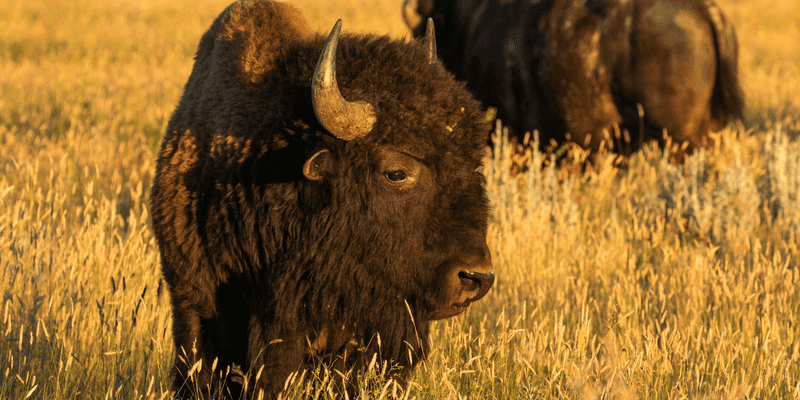
Grasslands with bison show remarkable climate resilience. Their grazing patterns promote deep-rooted grasses that better survive droughts and sequester more carbon underground.
Restored prairie ecosystems absorb rainfall more effectively, reducing flood risks. Bison-maintained landscapes better withstand extreme weather events – from heat waves to cold snaps. As climate change intensifies, these resilient ecosystems serve as models for natural climate solutions.
16. Scientific Understanding Deepens
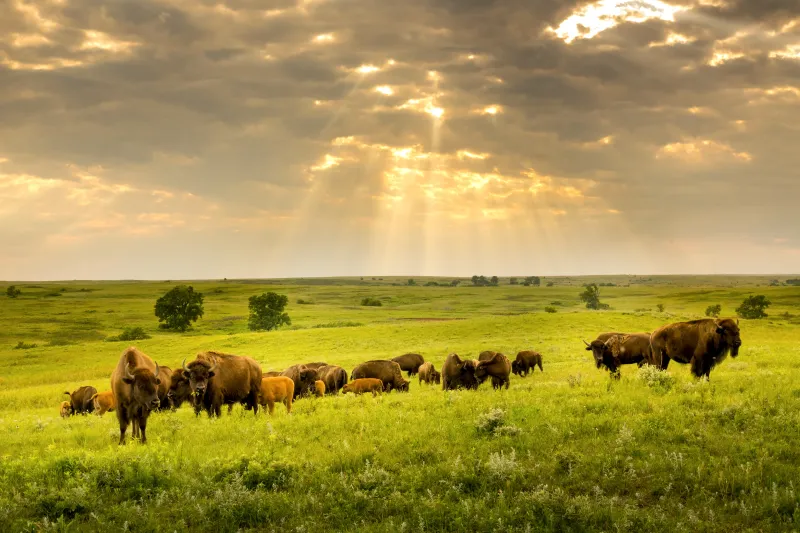
Researchers flock to bison reintroduction sites, generating valuable ecological insights. Studies reveal how these ecosystem engineers influence everything from soil microbes to watershed health.
New technologies track bison movements, health, and genetic diversity. Conservation genetics advances through efforts to maintain pure bison lineages. Each restored population becomes a living laboratory, helping scientists better understand not just bison ecology, but how keystone species shape entire ecosystems.


